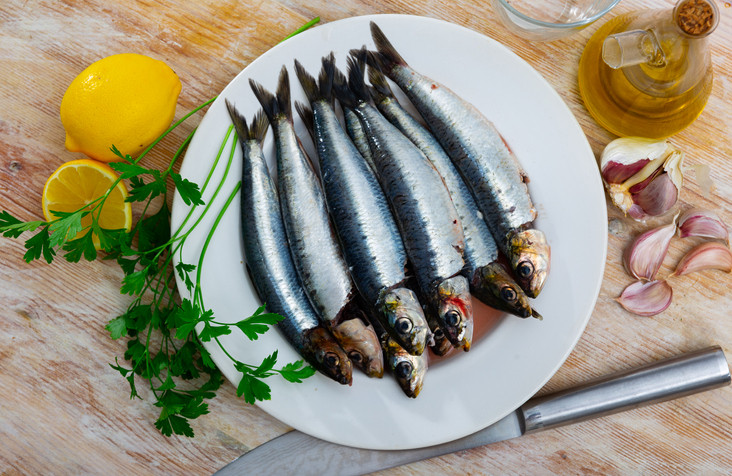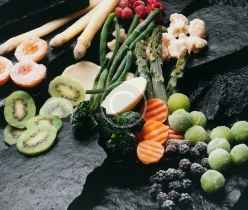Little fish and bivalves offer frequently neglected nourishing and natural worth.
Numerous wellbeing cognizant purchasers have previously scaled back burgers, steaks, and store meats, frequently by trading in poultry or fish. Those protein sources are superior to meat, and not on the grounds that they’re connected to a lower chance of coronary illness, diabetes, and disease. Chicken and fish are additionally better for the climate, as their creation utilizes less land and different assets and produces less ozone depleting substance emanations.
Also, picking fish that is lower on the established pecking order — specifically, little fish, for example, herring and sardines and bivalves like shellfishes and clams — can amp up those advantages. “It’s greatly improved for your wellbeing and the climate when you supplant earthly food sources — particularly red meat — with sea-going food sources,” says Christopher Brilliant, right hand teacher of sustenance and planetary wellbeing at the Harvard T.H. Chan School of General Wellbeing. Yet, rather than well known fish decisions like cultivated salmon or canned fish, consider mackerel or sardines, he recommends.
Why eat little fish?
Anchovies, herring, mackerel, and sardines are fantastic wellsprings of protein, micronutrients like iron, zinc, and vitamin B12, and heart-solid omega-3 unsaturated fats, which might assist with facilitating irritation inside the body and advance a superior equilibrium of blood lipids. What’s more, since you frequently eat the whole fish (counting the minuscule bones), little fish are likewise plentiful in calcium and vitamin D, says Brilliant. (Mackerel is an exemption: cooked mackerel bones are excessively sharp or intense to eat, albeit canned mackerel bones are fine to eat).
Little fish are additionally more averse to contain impurities like mercury and polychlorinated biphenyls (PCBs) contrasted and enormous species like fish and swordfish. Those and other enormous fish feed on more modest fish, which thinks the poisons.
It’s additionally more harmless to the ecosystem to eat little fish straightforwardly as opposed to utilizing them to make fish dinner, which is in many cases taken care of to cultivated salmon, pork, and poultry. Feed for those creatures additionally incorporates grains that require land, water, pesticides, and energy to deliver, similarly as grain took care of to steers does, Brilliant calls attention to. Fortunately progressively, salmon cultivating has started utilizing less fish dinner, and a few organizations have made profoundly nutritious feeds that don’t need fish feast at all.Small fish in the Mediterranean eating routine
The conventional Mediterranean eating regimen, broadly thought to be the best eating regimen for heart wellbeing, features little fish, for example, new sardines and anchovies, says Brilliant. Canned renditions of these species, which are generally accessible and more affordable than new, are a decent choice. Notwithstanding, most canned anchovies are salt-restored and subsequently high in sodium, which can raise circulatory strain.
Sardines stuffed in water or olive oil can be
served on wafers or dried up, toasted bread with a crush of lemon
arranged like fish salad for a sandwich filling
added to a Greek serving of mixed greens
thrown with pasta, either added to pureed tomatoes or with lemon, escapades, and red pepper pieces.Brilliant is especially partial to salted herring, which you can frequently track down in containers in general stores, or even make yourself; here’s his #1 recipe.
Bivalve advantages
Bivalves are two-shelled oceanic animals that incorporate shellfishes, clams, mussels, and scallops. Otherwise called mollusks, they’re great wellsprings of protein however are very low in fat, so they aren’t as wealthy in that frame of mind’s as little, greasy fish. Notwithstanding, bivalves contain a few micronutrients, particularly zinc and vitamin B12. Zinc adds to a sound invulnerable framework, and vitamin B12 helps structure red platelets that convey oxygen and keep nerves all through the body solid. While most Americans get enough B12, some may not.
What’s more, from a planetary wellbeing viewpoint, bivalves are among the best wellsprings of creature based protein. “Bivalves can be ‘nature positive’ since they don’t need feed and they channel and tidy up water,” says Brilliant.
Know, nonetheless, that bivalves can become defiled from overflow, microbes, infections, or synthetic substances in the water. So make certain to follow FDA guidance about purchasing and getting ready fish securely.
Despite the fact that we will generally consider beach front urban communities the best places to track down fish, it’s accessible all through the US. For more uncommon assortments, attempt bigger Asian business sectors, which frequently convey a wide assortment of fish and bivalves, Brilliant proposes.
Oceanic plant food varieties
You could go above and beyond down the amphibian pecking order by eating sea-going plant food varieties like ocean growth and kelp. Assuming you like sushi, you’ve presumably had nori, the level sheets of ocean growth used to make sushi rolls. You can likewise find kelp snacks in Asian and numerous standard supermarkets. The genuinely daring might need to attempt kelp jerky or a kelp burger, both sold on the web.
Supplements in ocean growth differ a considerable amount, contingent upon species (kelp is one sort of earthy colored kelp; there are likewise various green and red species). However, kelp is low in calories, is a decent wellspring of fiber, and furthermore contains iodine, a mineral expected to make thyroid chemicals. Like earthly vegetables, ocean growth contain a scope of different minerals and nutrients. For the present, oceanic plant food varieties remain periphery items here in the US, however they might turn out to be more standard later on, as per Brilliant.http://content.health.harvard.edu/wp-content/uploads/2023/04/4ade0e5e-cca2-4a8b-a7dc-f6068f194a76.jpg


